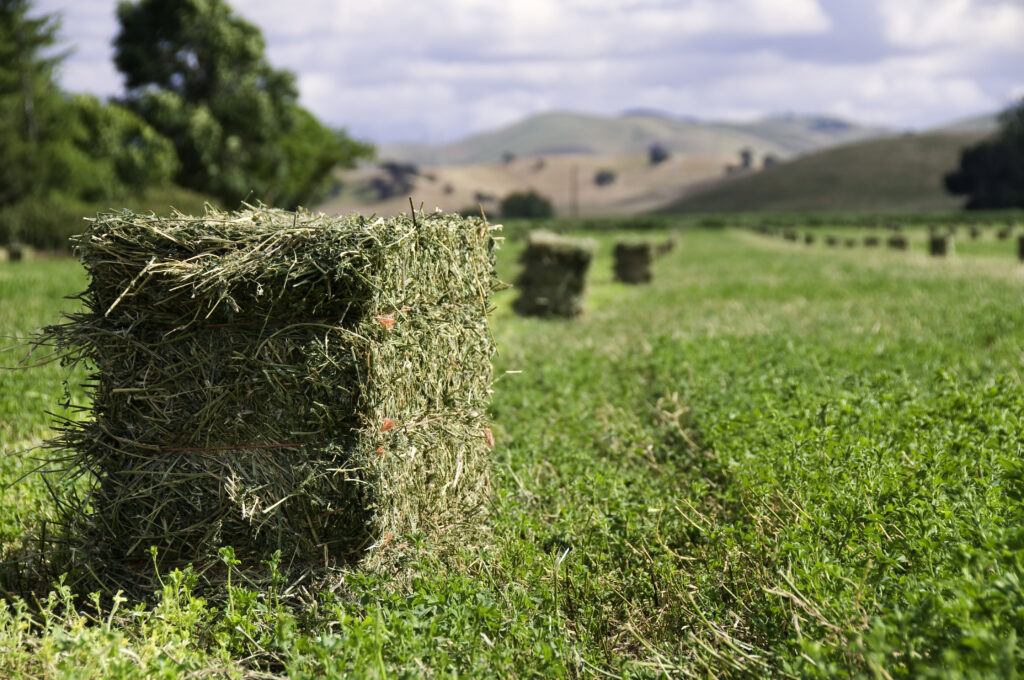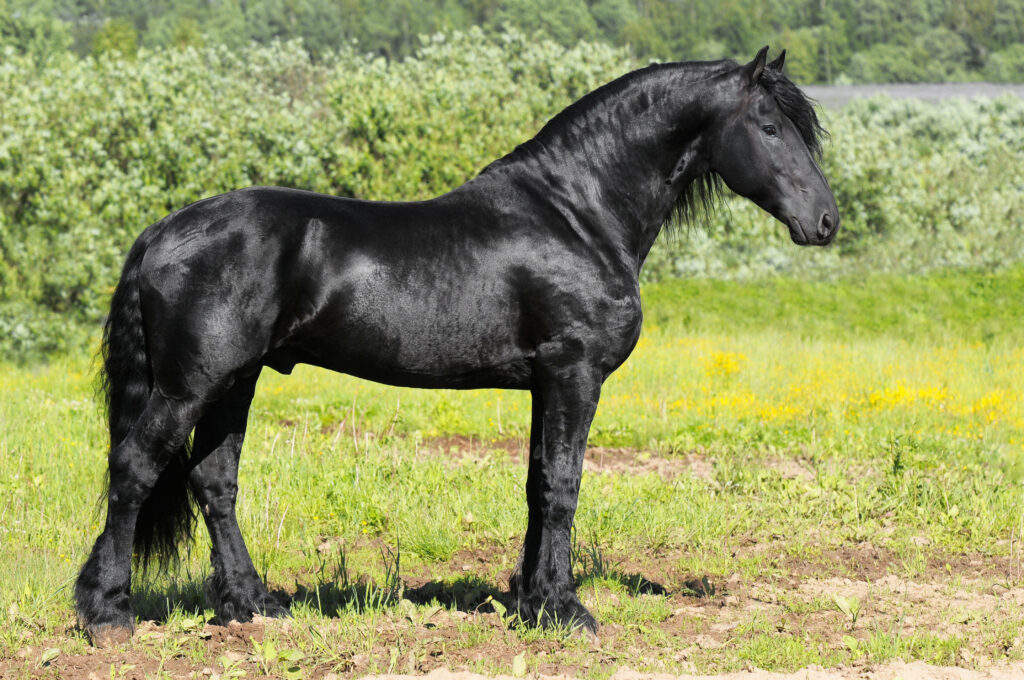
While sudden death in a horse is not a scenario that an equine practitioner can resolve, clients often want to know the cause. At the 2022 VMX meeting in Orlando, Florida, Sandy Taylor, DVM, PhD, DACVIM, of Purdue University, addressed several main causes of sudden death in horses.
Toxic Plants
A foremost cause of sudden death occurs from ingestion of toxic plants containing cardiac glycosides. One plant in particular, oleander, is a problem because of its use in many places as an ornamental.

Taylor explained the mechanism by which it kills: The glycoside inactivates the sodium/potassium pump in cardiac myocytes, leading to a buildup of potassium outside the cell with sodium collecting inside. This decreases the ability of the sodium/calcium pump to move calcium out of the cells after a muscle contraction. An accumulation of calcium within the myocytes increases the threshold of the membrane potential, making it harder to depolarize, and this leads to cardiac muscle weakness and arrhythmias. In addition, hyperkalemia increases the resting membrane potential closer to threshold, but it does so with less excitability and less chance of arrhythmias and decreased contractility. Resultant hypoxia throughout the body can also lead to multiple organ dysfunction.
Ingestion of just 8-10 leaves of oleander is a lethal dose for horses. If the horse doesn’t succumb to sudden death, it shows signs of cardiac weakness, weak peripheral pulses, pale mucous membranes and heart arrhythmias. Other components within the oleander plant also serve as a mucosal irritant to cause gastrointestinal ulceration followed by colic and hemorrhagic diarrhea.
Treatment steps rely on gastric lavage, activated charcoal, intravenous fluids and magnesium sulfate or lidocaine to manage arrhythmias. Overall mortality in one retrospective study is reported at 50%, although it is unknown if cost considerations of treatment impacted euthanasia.
Other cardiac glycoside plants include foxglove (digitalis purpura), from which the medication digoxin is used to manage atrial fibrillation and heart failure in people by increasing contractility and stroke volume and decreasing heart rate. A third plant containing cardiac glycoside is summer pheasant’s eye (Adonis aestivalis) that might be ingested in contaminated hay. Treatment strategies for these two plants are the same as for oleander.
Taylor also discussed taxine alkaloid toxicity from yew trees (Taxus spp.). These so-called “graveyard trees” lead to rapid death with consumption of any part of the plant at amounts even less than 0.1% (about 1 pound) of a 1,000-pound horse’s body weight.
A typical way horses might access yew is through hedge clippings thrown on a pile in the pasture.
Taxine alkaloid works by inactivating the sodium/calcium channel in cardiac myocytes leading to increased calcium that raises the threshold potential—the cells are less excitable, leading to arrhythmia and weak contractions. There is little chance of intervention because most horses are simply found dead.
Cantharidin Toxicity

Another ingestion concern is cantharidin toxicosis from blister beetles. All blister beetle species are lethal, but the striped variety is the most toxic. These beetles swarm in alfalfa fields, but they are not usually found during the first cutting of hay.
Just 4-6 grams of dried beetle is lethal, and even dead beetles remain toxic for several months. Cantharidin is a direct irritant that causes contact necrosis of the gastrointestinal epithelial cells. Then it is absorbed into the blood to further cause contact necrosis of renal epithelial cells.
Most horses experience hypocalcemia, although only 10% develop synchronous diaphragmatic flutter (aka thumps). Most also experience hypovolemic and/or endotoxic shock, and some might develop neurologic signs due to lowered sodium blood levels. Death occurs within 24 hours of onset of clinical signs.
If identified in time, gastric lavage, activated charcoal and supportive care with IV fluids might help. The use of polymyxin B can target endotoxemia, and in some cases antimicrobial drugs are useful.
Aortic Rupture

There are two forms of aortic rupture: a) aortic root rupture that tends to occur in older breeding stallions but can occur in any age horse; and b) aortic arch rupture associated with Friesian horses.
Aortic root rupture can result from degenerative or inflammatory changes, but sclerosis or fibrosis of the aortic valve is most common. Also, wall stress trauma from exertion with breeding or exercise might be a prelude to rupture. If the horse doesn’t die suddenly, it might present with colic or ventricular arrhythmia, become weak, have bounding peripheral pulses, and have an audibly loud continuous murmur.
Aortic arch rupture has a prevalence of 2% in Friesian horses, likely due to an elastin deficiency that results in smooth muscle hypertrophy and an increase of type 1 collagen fibers in the wall of the aorta. Compared to Warmbloods, it is reported that Friesians have a stiffer aorta and higher blood and pulse pressures. The rupture might open into the thoracic cavity or the pulmonary artery. An affected horse can show signs days to weeks before heart failure that can include cough, poor performance or colic. Once in heart failure, the horse displays tachycardia, a prominent jugular pulse, pale mucous membranes, peripheral edema (in 29% of horses), pulmonary edema (in 21% of horses) and possible epistaxis. Sudden death occurs in 15% of cases.
Diagnostic efforts for any aortic rupture depend on an ECG, echocardiography and thoracic ultrasound. Taylor noted that many Friesians are heavily muscled and fat laden, making an echocardiogram less revealing. Diagnosis is also made at a postmortem exam. There is no practical treatment.
Lightning Strike
The final sudden death issue discussed by Taylor was that of lightning strike, which is a rare occurrence in horses. This cause of fatality should be suspected if there are multiple horses found dead or you find horses have developed ocular or skin injuries after a thunderstorm. A direct lightning strike occurs in only 5% of cases. In most cases current reaches a horse through other pathways.
In half the cases, death is caused by ground-traveling current that is driven through the body due to the difference in voltage between limbs and the distance between feet. Side flash can also occur when there is a strike of an object (such as a tree) and current “splashes” onto a nearby object as an additional path to ground. In humans, this happens in 30% of lightning strike cases.
In 15% of lightning strikes in horses, contact current passes through a struck object (such as a fence) and into the horse touching that object.
The pathophysiology of a lightning strike results in related deficits or sudden death:
- Cardiac arrest occurs when 300 million volts immediately and simultaneously depolarize all myocardial cells. Compare this to 10,000 volts used to electrify an electric fence.
- Rapid heating of surrounding air can cause a shock that delivers blunt force trauma directly or from throwing an animal to the ground.
- A “flashover” phenomenon is one where the current flows around the outside of the body to create external and ocular injuries. This is intensified if the body and hair (or clothing) are wet.
- Burns can occur externally and internally. These appear as Lichtenberg figures, which are branching electrical discharge patterns on the skin as current leaves the body.
- Cardiac or respiratory arrest from lightning strike can lead to hypoxic issues.
Of humans struck by lightning, 75% survive. There is no data for horses. For horses, one of the biggest consequences of lightning strikes is a subsequent barn fire that then creates other significant health problems for the horse such as skin burns and smoke inhalation.
General Causes of Sudden Death in Horses
While Taylor explained the most common causes of sudden death, athletic horses also experience episodes that result in sudden collapse while a horse is exercising or shortly thereafter.
In one study of 49 horses deceased due to sudden death, the cause was not identified in about 31% [Brown, C.M.; Kaneene, J.B.; Taylor, R.F. Sudden and unexpected death in horses and ponies: an analysis of 200 cases. Equine Veterinary Journal March 1988, vol. 20 (2), pp. 99-103; doi: 10.1111/j.2042-3306.1988.tb01468.x].
Cardiovascular lesions caused death in 14.4%. Gastrointestinal lesions were said to be the cause in 3.1%.
In another group of 151 horses in this study, cause of death was not identified in 33%, but gastrointestinal lesions were the cited cause in nearly 40% of cases. Respiratory lesions caused death in about 9%, and cardiovascular and central nervous system lesions caused death in about 5%. A variety of miscellaneous lesions resulted in 10% of cases of sudden death.
Sudden Death in Horses: The Bottom Line
Fortunately, sudden death in horses is not a common occurrence. Client education can help limit events related to a horse’s access to toxic plants. Understanding about blister beetles is helpful for managing alfalfa hay safety. Education is also important for horse owners to know how to react during thunderstorms and the best way to protect their horses and themselves. Cardiovascular events related to aortic rupture are mostly out of one’s control other than early recognition of a cardiac abnormality through diagnostic imaging.








